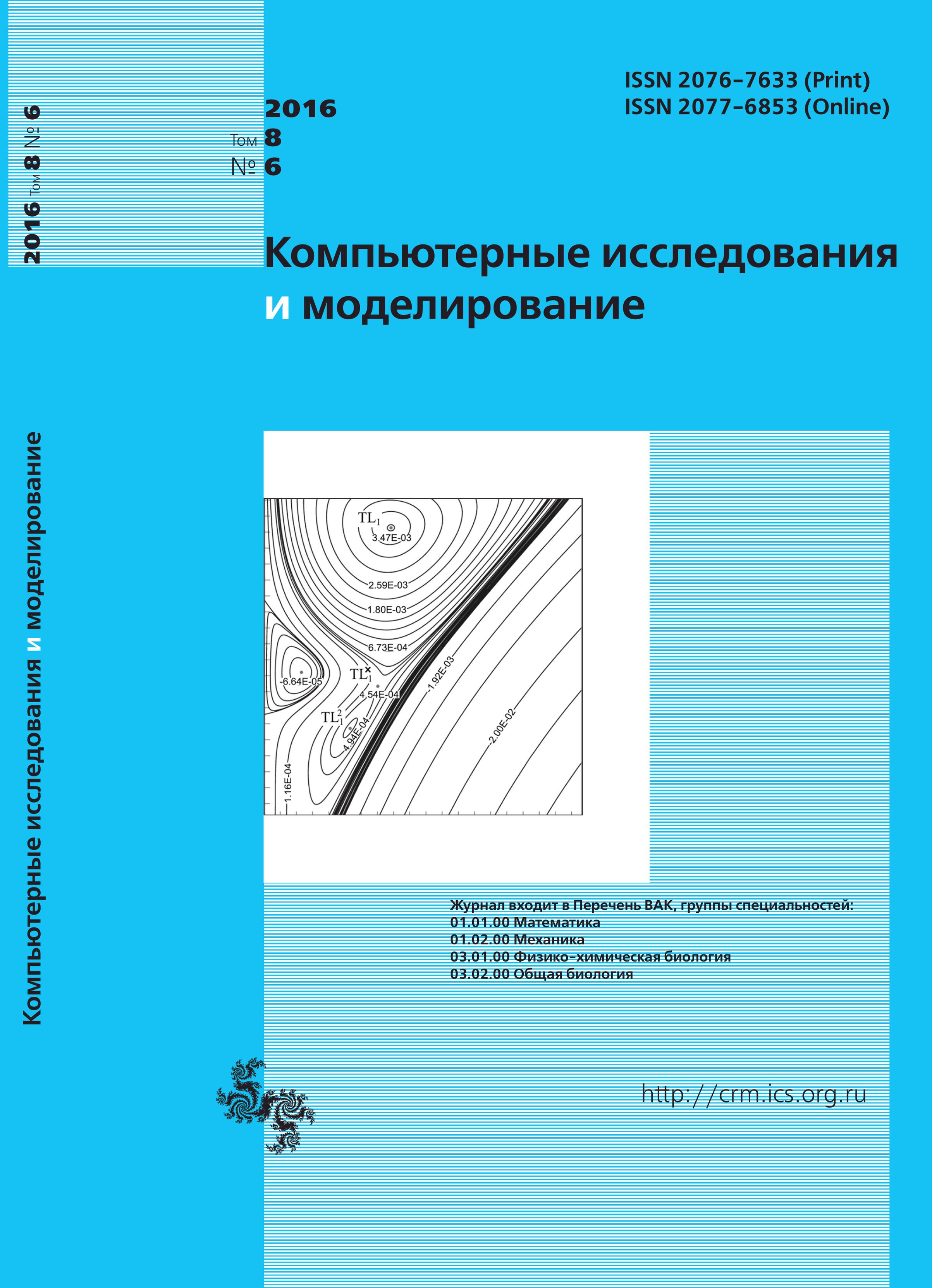All issues
- 2024 Vol. 16
- Issue 1 (special issue)
- 2023 Vol. 15
- 2022 Vol. 14
- 2021 Vol. 13
- 2020 Vol. 12
- 2019 Vol. 11
- 2018 Vol. 10
- 2017 Vol. 9
- 2016 Vol. 8
- 2015 Vol. 7
- 2014 Vol. 6
- 2013 Vol. 5
- 2012 Vol. 4
- 2011 Vol. 3
- 2010 Vol. 2
- 2009 Vol. 1
The development of fracture mathematical models for numerical solution of exploration seismology problems with use of grid-characteristic method
The article contains the description of developed mathematical models of fractures which can be used for numerical solution of exploration seismology problems with use of grid-characteristic method on unstructured triangular and tetrahedral meshes. The base of developed models is the concept of infinitely thin fracture. This fracture is represented by contact boundary. Such approach significantly reduces the consumption of computer resources by the absence of the mesh definition inside of fracture necessity. By the other side it lets state the fracture discretely in integration domain, therefore one can observe qualitative new effects which are not available to observe by use of effective models of fractures, actively used in computational seismic.
The main target in the development of models have been getting the most accurate result. Developed models thet can receive the response close to the actual response of the existing fracture in geological environment. We considered fluid-filled fractures, glued and partially glued fractures, and also fractures with dynamical friction force. Fracture behavior determinated by the nature of condition on the border.
Empty fracture was represented as free boundary condition. This condition give us opportunity for total reflection of wave fronts from fracture. Fluid-filling provided the condition for sliding on the border. Under this condition, there was a passage of longitudinal and total reflection of converted waves. For the real fractures, which has unequal distance between the borders has been proposed the model of partially glued fracture. At different points of the fracture's boundary were sat different conditions. Almost the same effect is achieved by using a fracture model of dynamic friction condition. But its disadvantage is the inabillity to specify the proportion of fracture's glued area due to the friction factor can take values from zero to infinity. The model of partially glued fracture is devoid of this disadvantage.
Indexed in Scopus
Full-text version of the journal is also available on the web site of the scientific electronic library eLIBRARY.RU
The journal is included in the Russian Science Citation Index
The journal is included in the RSCI
International Interdisciplinary Conference "Mathematics. Computing. Education"







